21+ Sample Annual Performance Evaluation
-
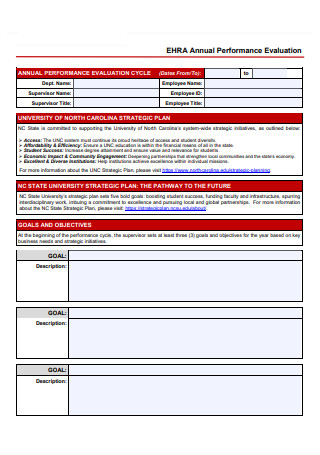
Annual Performance Evaluation Template
download now -
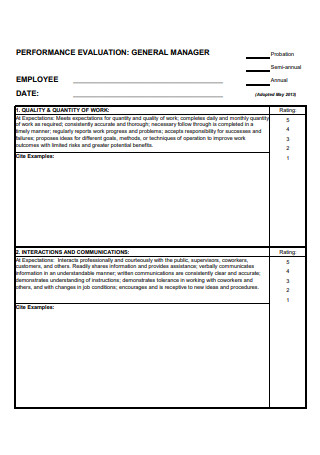
General Manager Annual Performance Evaluation
download now -
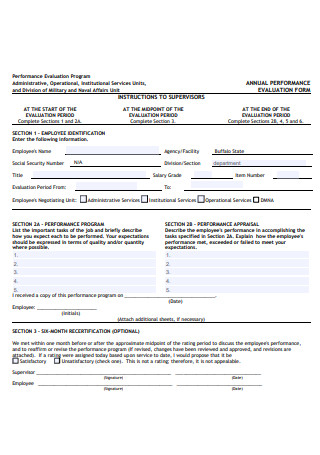
Annual Performance Evaluation Form
download now -
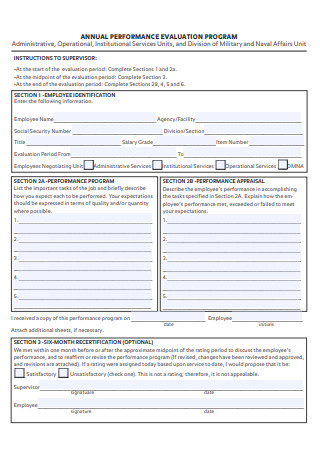
Annual Performance Evaluation Program
download now -
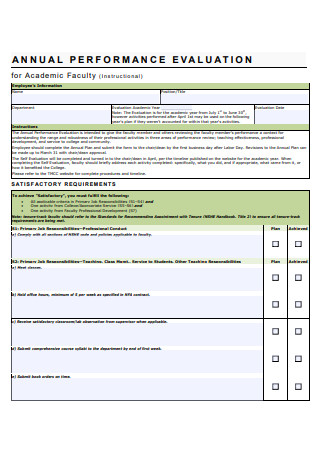
Academic Faculty Annual Performance Evaluation
download now -
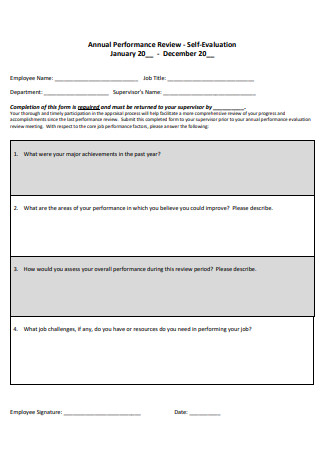
Annual Performance Review Self-Evaluation
download now -
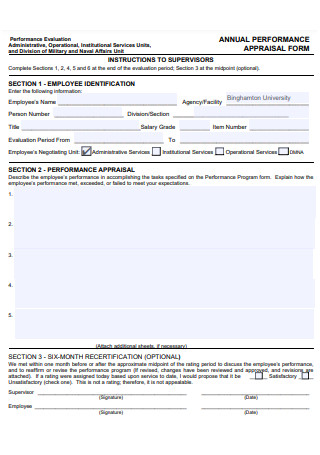
Annual Performance Evaluation Appraisal Form
download now -
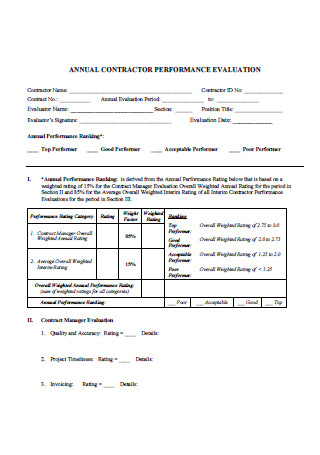
Annual Contractor Performance Evaluation
download now -
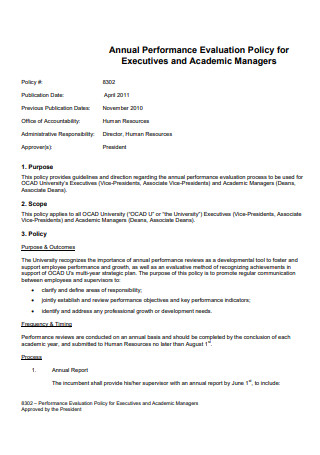
Annual Performance Evaluation Policy For Executives and Managers
download now -
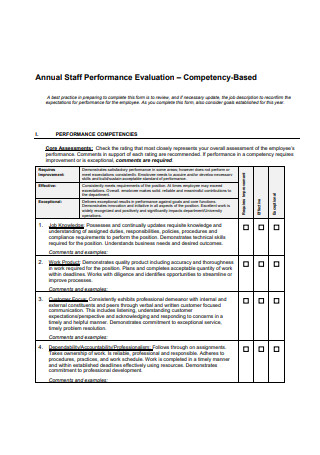
Annual Staff Performance Evaluation
download now -
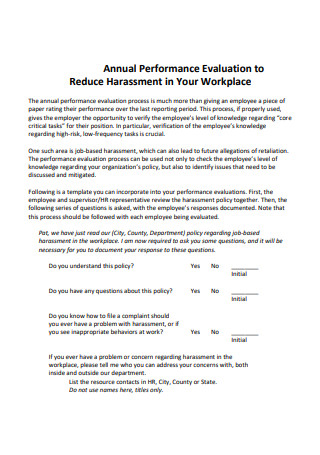
Annual Performance Evaluation in PDF
download now -
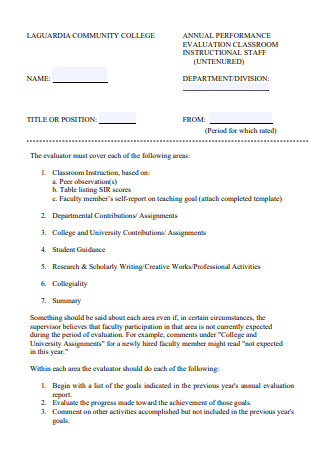
Classroom Annual Performance Evaluation
download now -
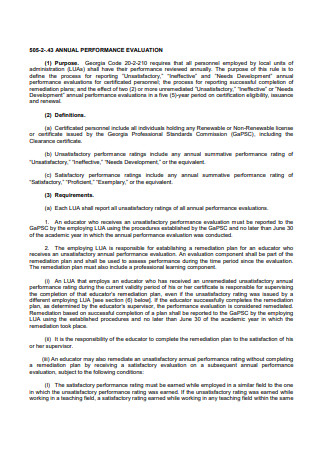
Printable Annual Performance Evaluation
download now -
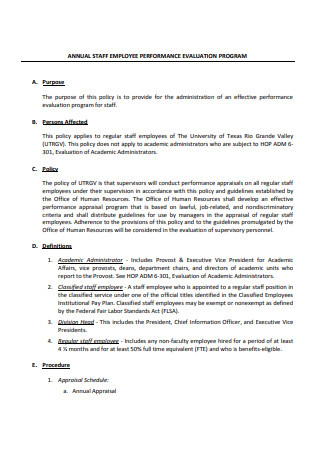
Annual Staff Employee Performance Evaluation Program
download now -
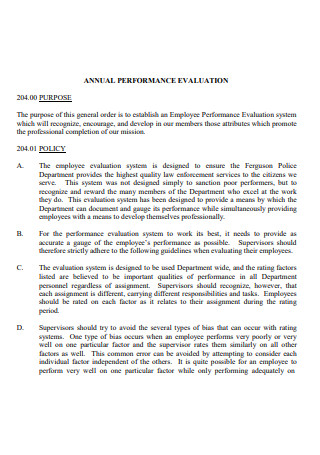
Annual Performance Evaluation Example
download now -
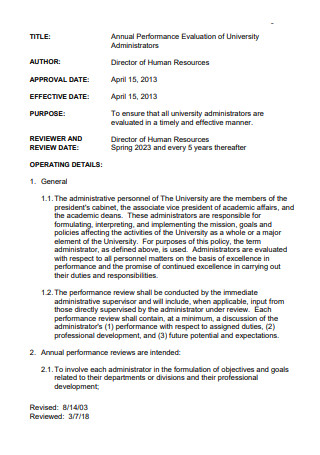
Administrator Annual Performance Evaluation
download now -
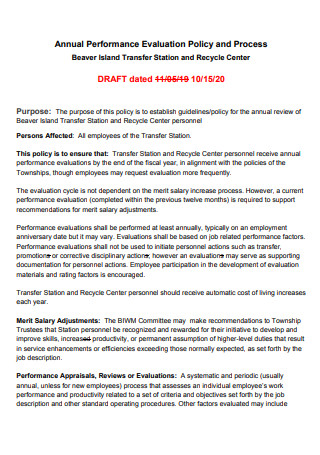
Draft Annual Performance Evaluation
download now -

Standard Annual Performance Evaluation
download now -
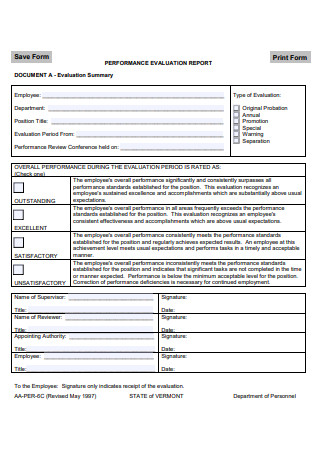
Annual Performance Evaluation Report
download now -

Executive Director Annual Performance Evaluation
download now -
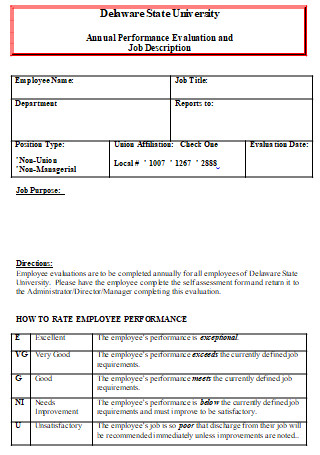
Annual Performance Evaluation and Job Description
download now -
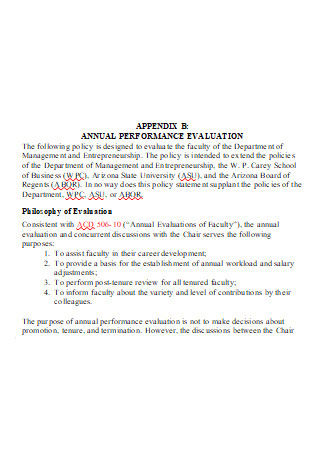
Annual Performance Evaluation in DOC
download now
FREE Annual Performance Evaluation s to Download
21+ Sample Annual Performance Evaluation
What is an Annual Performance Evaluation?
Different Types of Annual Performance Evaluation
Benefits of Writing an Annual Performance Evaluation
Basic Elements of a Annual Performance Evaluation
How to Create an Annual Performance Evaluation
FAQs
What are some examples of annual performance evaluation?
What is the purpose of an annual performance evaluation?
What are the essential steps in writing an annual performance evaluation?
What are the benefits of annual performance evaluation?
What is an Annual Performance Evaluation?
An annual performance evaluation is a structured document that displays a clear analysis plan of the major activities and performance of a person, student, working professional, employee, staff, program, specific business firm or organization every year. This is a beneficial report which outlines the recommendations, comments, and other specifications regarding the status of activities, projects, and other events achieved in the entire year. Also, it plays a key role in measuring the level of annual growth and development of an individual, a project, a business firm or an organization, and in formulating systematic decisions.
A report states that 98% of businesses believe performance management is essential while only 64% say they have an effective approach to it. Thus, all types of business executives, general managers, project leaders, medical directors, educators, trainers, program developers, and other professionals in other fields should record and examine major achievements every year through an effective annual performance evaluation for their work and other business projects.
Different Types of Annual Performance Evaluation
eam managers, supervisors, trainers, program developers, project leaders, academic heads, and other working professionals, as well as departments, institutions, and organizations should communicate with their people in realigning them around definite and realistic goals and providing support. In this section, you will learn and understand about the different types of annual performance evaluation. To assist you in this matter, we will introduce and explain to you about the different types of annual performance evaluation reports below:
1. General Manager Annual Performance Evaluation
Do you need to maintain a solid board or manager team? Performing an effective evaluation of the general manager’s performance plan is made through empowering open and productive communication on a yearly basis. This process is a great opportunity in determining the particular areas of satisfaction and items requiring modification or improvement. An annual performance evaluation for general managers includes crucial areas that need to be examined carefully such as quality and quantity of work, interactions and communications, planning and organization, decision making and problem solving, personal behavior, attendance and punctuality, leadership, evaluation and objectivity, governing board relationships, fiscal management, and others.
2. Annual Academic Performance Evaluation
Alex Quigley wrote in The Confident Teacher: Developing Successful Habits of Mind, Body and Pedagogy that despite many teachers bursting with brilliance, they are also filled with doubts about themselves and their ability to teach well. Aside from that, gaining trust from the students or colleagues appears to be a challenging task as well. Thus, teachers, tutors, educators, and other academic professionals need to set clear organizational goals, operationalize the smart goals to targets on relevant indicators, analyze goal attainment on the basis of these indicators, and take corrective actions based on performance standards in order to facilitate academic performance management. Through an effective academic performance evaluation on a yearly basis, teachers are able to develop their skills and real confidence like how Picasso honed his art: steadily, with deliberate practice, perseverance and passion.
3. Program Annual Performance Evaluation
Mireille Guiliano, a French-American author and former corporate executive, said: “Developing a program that will serve you a lifetime is not an instant fix. Attitude shifts take much longer, but when they take, they tend to take for good.” When assessing program performance, consider these important elements and methods such as key performance indicators (KPIs), benchmarking, literature review, survey report, observation, meetings, workshops, and interviews, administrative and quantitative data, etc. Doing this on a yearly basis can help notify public and private sectors and stakeholders about the latest status of the program in a year. Plus, an annual performance evaluation of the program involves measuring if it has fulfilled its predetermined results.
4. Self-Evaluation Annual Performance Review
Do you want to conduct an effective self-evaluation for an annual performance review? Also known as self-assessment plan, the aim of a self-evaluation is to provide authentic insights into how you comprehend your personal performance and realize how other people understand your performance. Tasha Eurich, an organizational psychologist, described two perspectives: internal and external self-awareness as a “delicate balance of two distinct, even competing, viewpoints,” ensuring your self-evaluation won’t be one-sided. When you write your self-evaluation, reflect on how your actions in the whole year affect others, list down your major accomplishments, identify areas for improvements, and collect analytics to illustrate impact.
Benefits of Writing an Annual Performance Evaluation
Although many people consider annual performance evaluation as a time-consuming process, there are other individuals and business firms that have utilized annual performance evaluations to their convenience for expediting growth and development. So, what are the notable benefits of writing an effective annual performance evaluation? Below are some of the benefits of writing an annual performance evaluation report:
1. Documents Annual Growth and Development
If you are an academic supervisor, team leader, project manager, or executive director, then writing an annual performance evaluation report is exceptionally important in documenting the annual growth and performance development plan levels of students, staff, employees, programs, projects and/or other business ventures. This will assist you in leading the management, board of directors, executives, committees, as well as investors and shareholders while carefully checking and evaluating the current status of a student, employee, athlete, musician, project, business, or company, analyzing the potential progress that it can hold towards greater development.
2. Specifies Crucial Areas for Improvement and Supplementary Training
Annual performance evaluation can fully help in specifying crucial areas for improvement and supplementary training. Scientific method is extensively applied in systematic evaluation. So, it is an organized endeavor that can be utilized by many professionals, especially in determining the merit and worth of a specific idea, person, project plan, or business, and identifying the value proposition. Performance evaluators have the appropriate methods, processes, standards, and tools to guide their annual performance evaluation.
3. Heightens Job Satisfaction and Motivation
In order to heighten job satisfaction and motivation, it is vital that you write a simple and effective annual performance evaluation report that will significantly help in assessing the employees’ work effectiveness, and efficiency. Based on a report, 91% of highly engaged employees are satisfied with their professional development opportunities. Utilizing an annual performance evaluation allows employees to feel like valued and respected team members whose contribution is appreciated and recognized.
4. Elevates Overall Performance and Profitability
A 2011 study reported that teams perform 8.9% more profitably, and with 12.5% greater productivity when their managers are provided with feedback on their strengths. Creating annual performance evaluation reports is beneficial in elevating overall performance and profitability as it promotes positive and constructive feedback to employees, managers, staff, and teams. Searching for ways to develop valuable decisions is used in an effective evaluation. When the teachers, academic professionals, project managers, immediate heads or team leaders, and other professionals use annual performance evaluation, they can guide their students, employees, team, projects, or their business firms in leveling up the overall performance while accepting worthwhile suggestions from others.
Basic Elements of a Annual Performance Evaluation
In this section, you will learn how to construct a remarkably written and well-designed annual performance evaluation report. However, an annual performance evaluation report has different parts. Include the following elements for you to create an excellent document:
How to Create an Annual Performance Evaluation
Analyzing the work of employees by identifying and assigning weight to each of the employee’s areas of accountability and conducting a performance review through assigning a numerical rating for each characteristic are essential in creating an effective performance evaluation. Below are some easy-to-follow tips that indicate how to design and craft a professional annual performance evaluation:
Step 1: Write a Clear Overview of the Accomplishments in Every Year
Define the total accomplishments and milestones of the individual, project, program, company or organization in 12 months or simply, the whole year so that you are able to create a clear and organized overview. List down all of the major activities, and tasks that are fulfilled in that year.
Step 2: Indicate a Timeline of Annual Achievements and Milestones
What does the timeline of achievements and milestones of the student, employee, working professional, program, business or project showcase? Indicate a simple timeline chart of the crucial elements already achieved in 12 months. Include the exact time, day, and date.
Step 3: Develop an In-depth Evaluation
Elaborate the accomplishments of an individual, or employee, a project or program, and/or a business firm or organization in the entire year. Ask the key individuals about the growth and development they encountered in that period. Then, set clear and solid goals and objectives. Offer useful feedback and ask how you can assist or guide them.
Step 4: Apply Accuracy and Coherence
Niels Bohr said: “Accuracy and clarity of statement are mutually exclusive.” Be more economical in your choice and application of words. Keep the ideas and sentences coherent to one another. If you need to include some numerical figures like percentages and rates in the annual performance evaluation of the students, employees, business firms, projects or organizations, ensure that the numbers are accurate. Plus, you should consider your main purpose statement and the reader while creating the performance evaluation.
Step 5: Proofread and Revise the Overall Report
Check your entire annual performance evaluation after every year. Write all the crucial elements in your annual performance evaluation. If you notice that you overlook some sections that require sufficient points, we suggest that you proofread and revise the overall performance evaluation report.
Step 6: Prepare the Final Annual Performance Evaluation
After proofreading and revising, you can now prepare the final quarterly evaluation. Include some dap notes and other important messages you want to convey to your target audience such as investors, stockholders, clients, committee or management members, and/or other individuals on the concluding part of your annual performance evaluation. Skim your report for final analysis and quality check.
FAQs
What are some examples of annual performance evaluation?
Some examples of annual performance evaluation are general manager annual performance evaluation, annual performance evaluation program, academic faculty annual performance evaluation, annual performance review self-evaluation, annual performance evaluation appraisal form, annual performance evaluation policy for executives and managers, annual staff performance evaluation, classroom annual performance evaluation, administrator annual performance evaluation, executive director annual performance evaluation, and more.
What is the purpose of an annual performance evaluation?
The purpose of an annual performance evaluation is to exhibit and feature the annual growth and accomplishments of an individual, employee, project, program, staff, general manager, executive director, or business firm through facilitating communication and useful feedback on job performance, enhancing better working relationships, keeping a historical and real-time record of performance, and committing to professional development. This is relevant in formulating the right decisions and developing systematic plans to be successful in a particular goal, project, or business.
What are the essential steps in writing an annual performance evaluation?
Start your annual performance evaluation with a summary or overview paragraph of the prioritized goals and accomplishments that are reached by the individual, project, program, staff, or company profiles. After that, include the significant details of the summary and an in-depth analysis of the fulfilled goals. Design a systematic timetable to list down all the accomplishments and milestones that are completed every year. Use some charts, graphs, tables, and other visual diagrams to depict the growth and development of the individual, project or company throughout the year.
What are the benefits of annual performance evaluation?
Some of the notable benefits of annual performance evaluation are mastering the crucial areas that could be improved, determining specific areas for supplementary training, elevating performance and profitability, heightening job satisfaction and motivation, enhancing morale and teamwork, and many others.
Kathryn Minshew said: “Done right, a performance review is one of the best opportunities to encourage and support high performers and constructively improve your middle- and lower-tier workers.” Therefore, writing a clear and effective annual performance evaluation for your staff, employees, business, project, program, meeting, or organization is a worthwhile process in documenting annual growth and development, specifying crucial areas for improvement and supplementary training strategy plan, heightening job satisfaction and motivation, and elevating overall performance and profitability. Practice accuracy, feasibility, utility, propriety, and accountability when you create an annual performance evaluation. So, here are some of our downloadable and printable annual performance evaluation report samples available in different kinds of formats. Simply click the annual performance report templates in this article and start downloading now!
